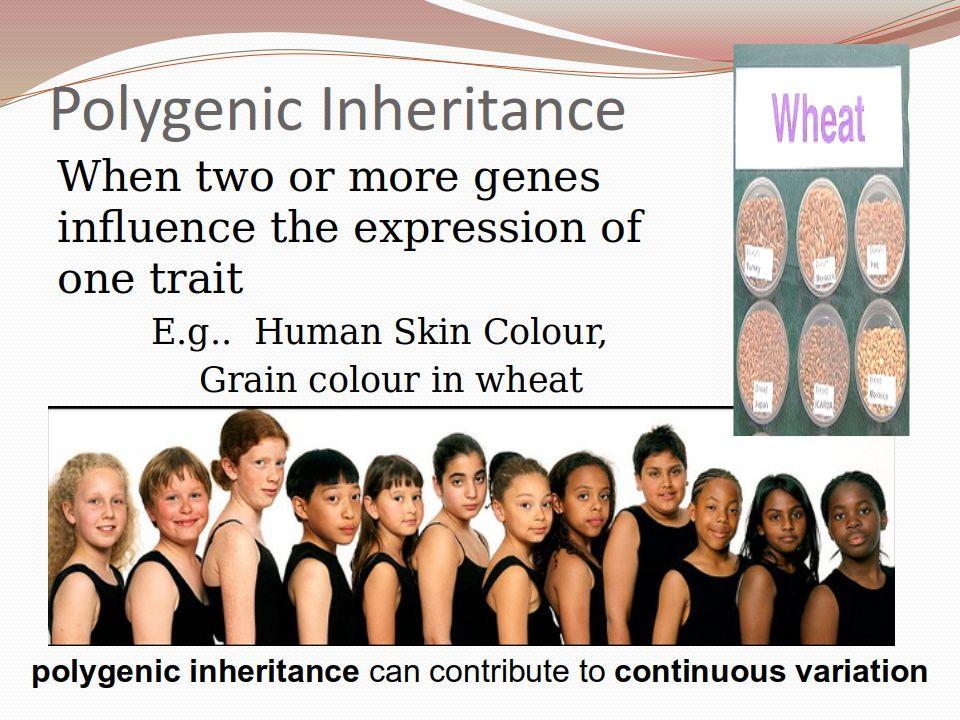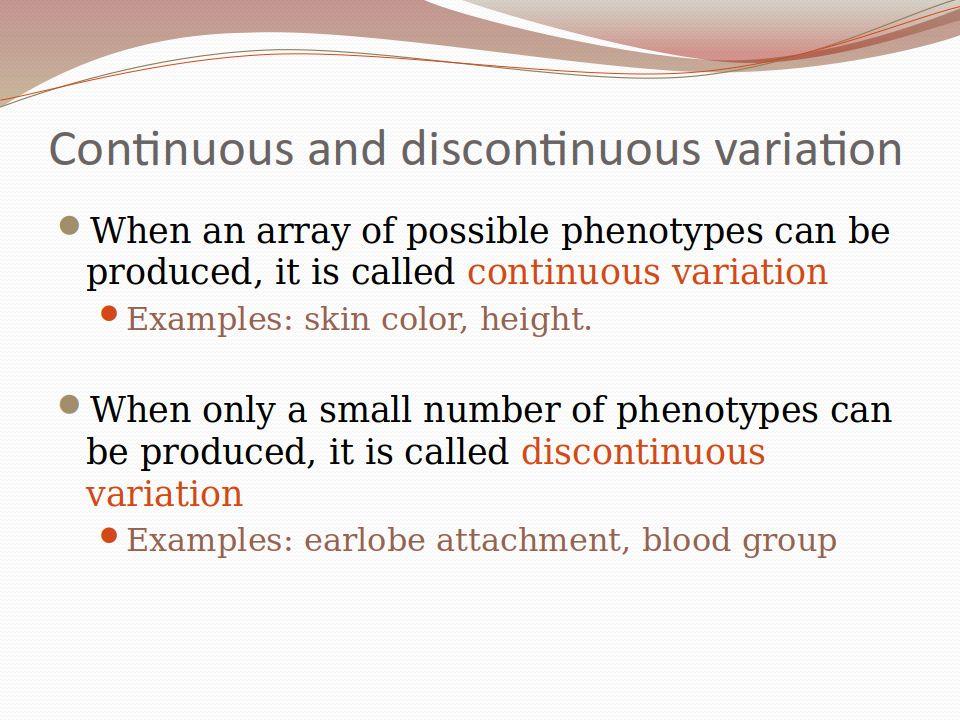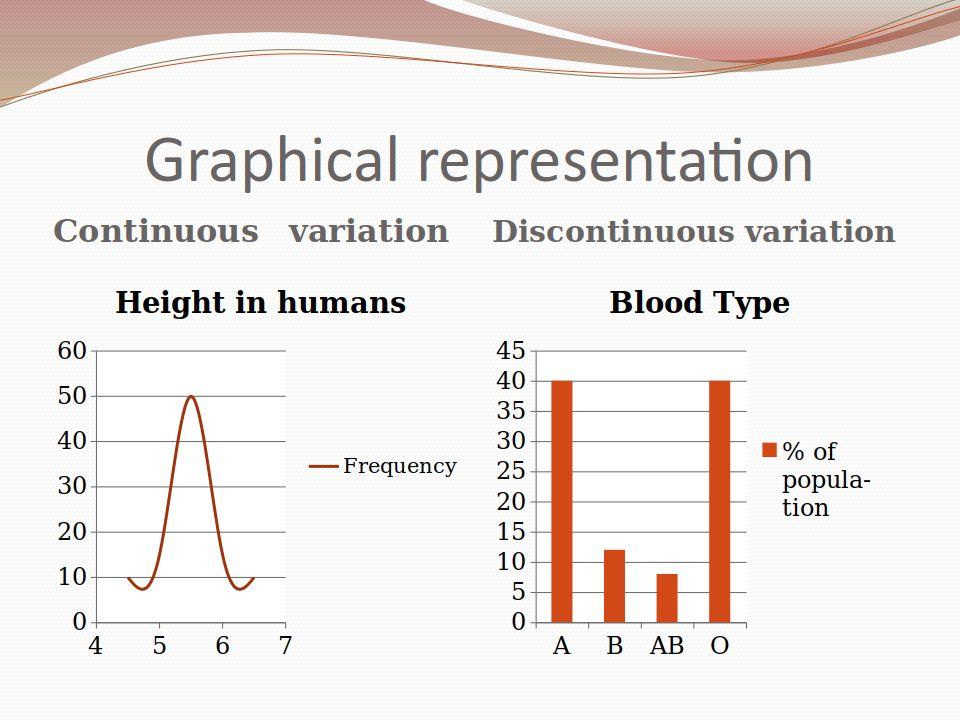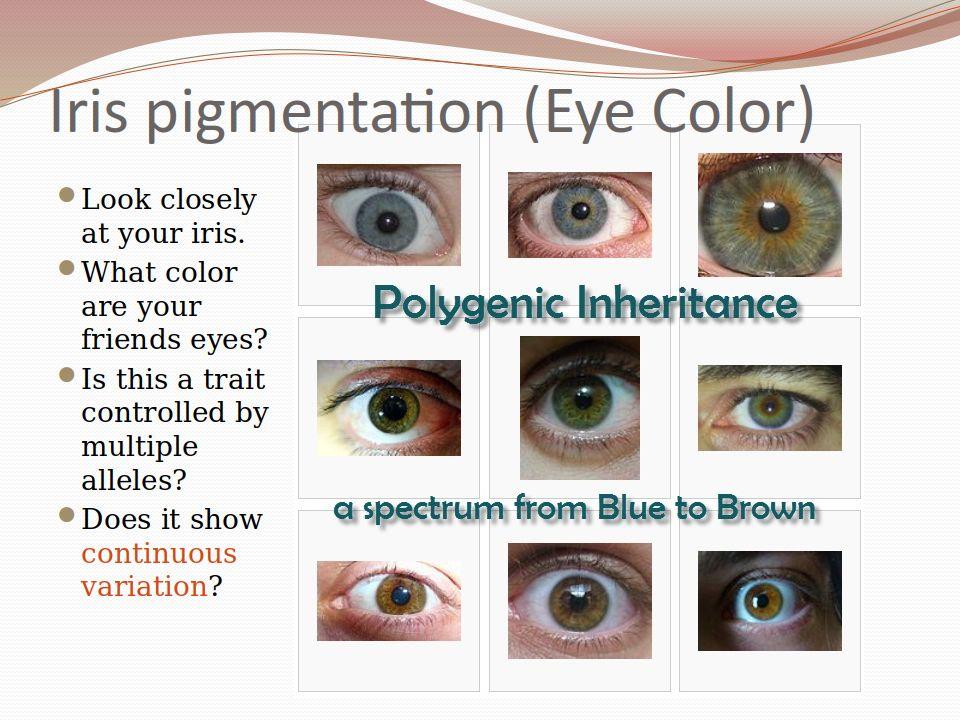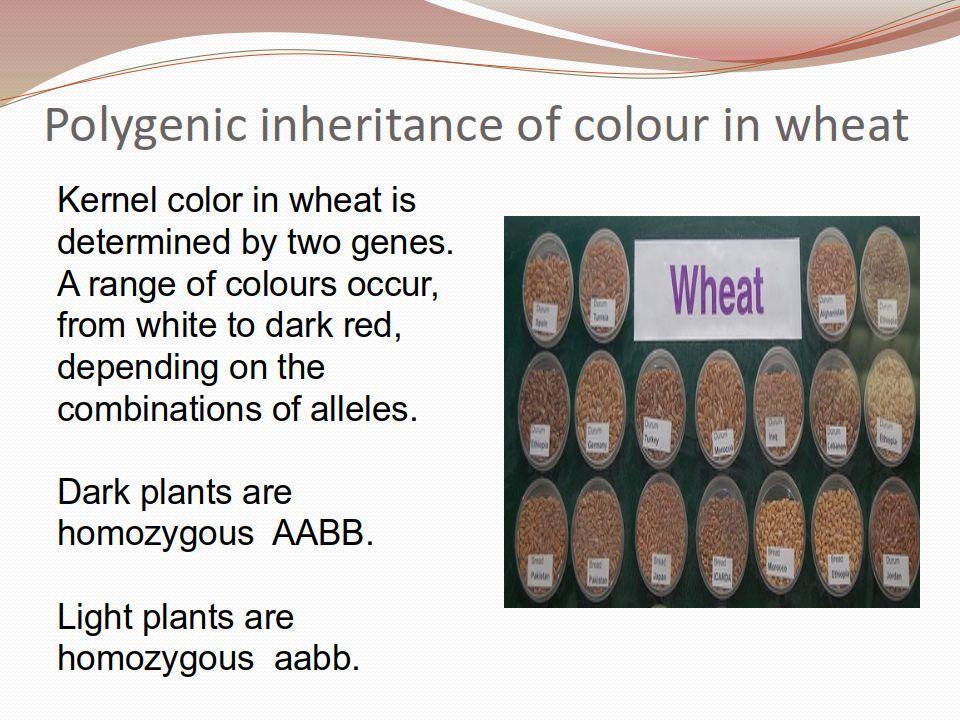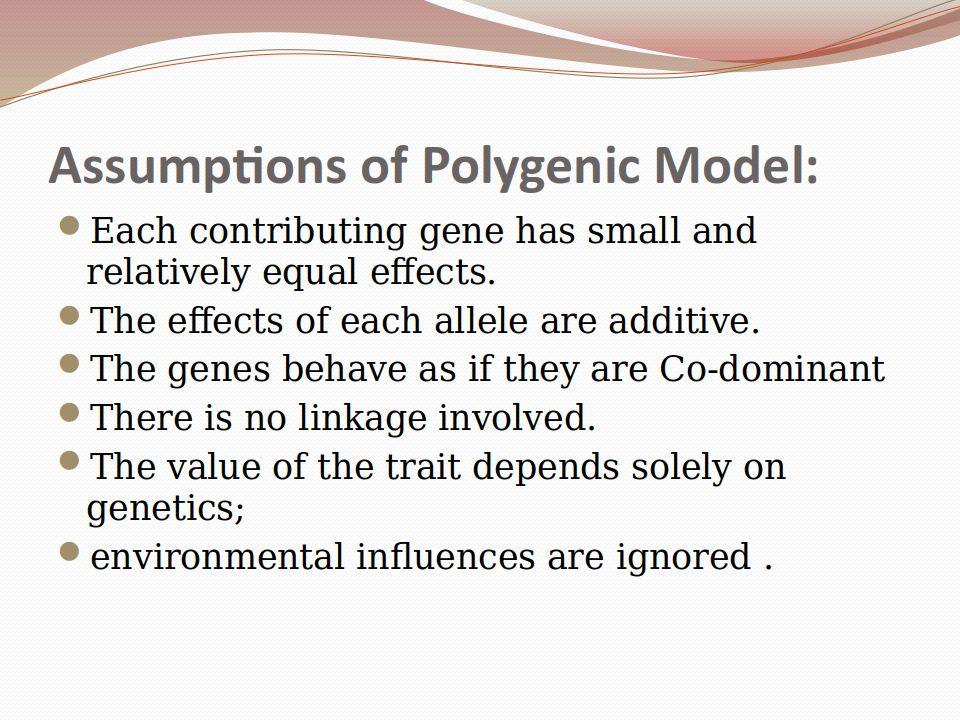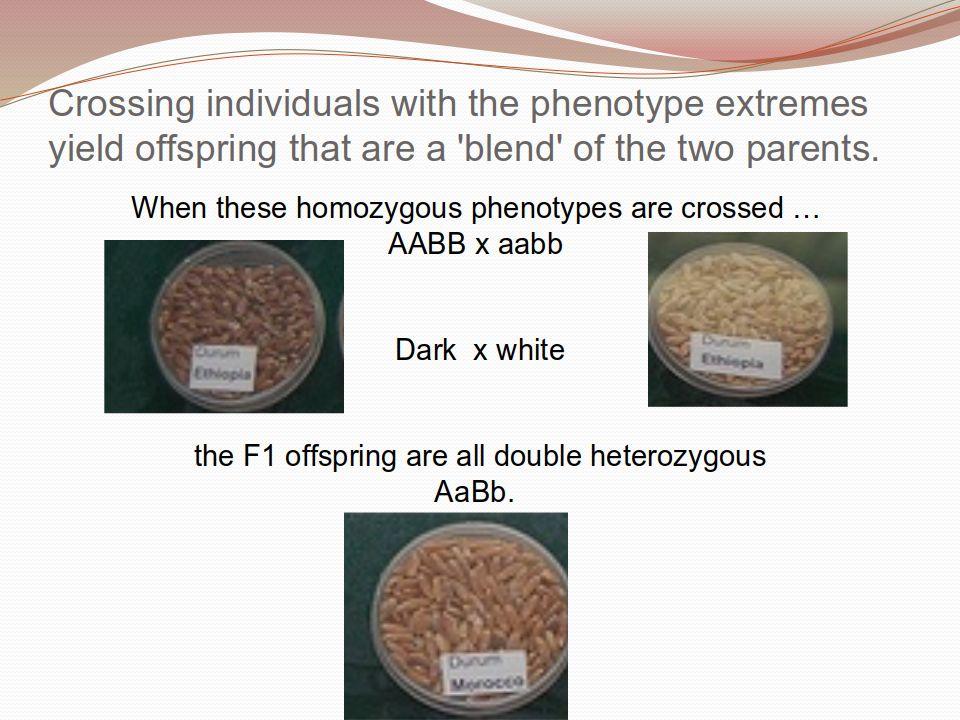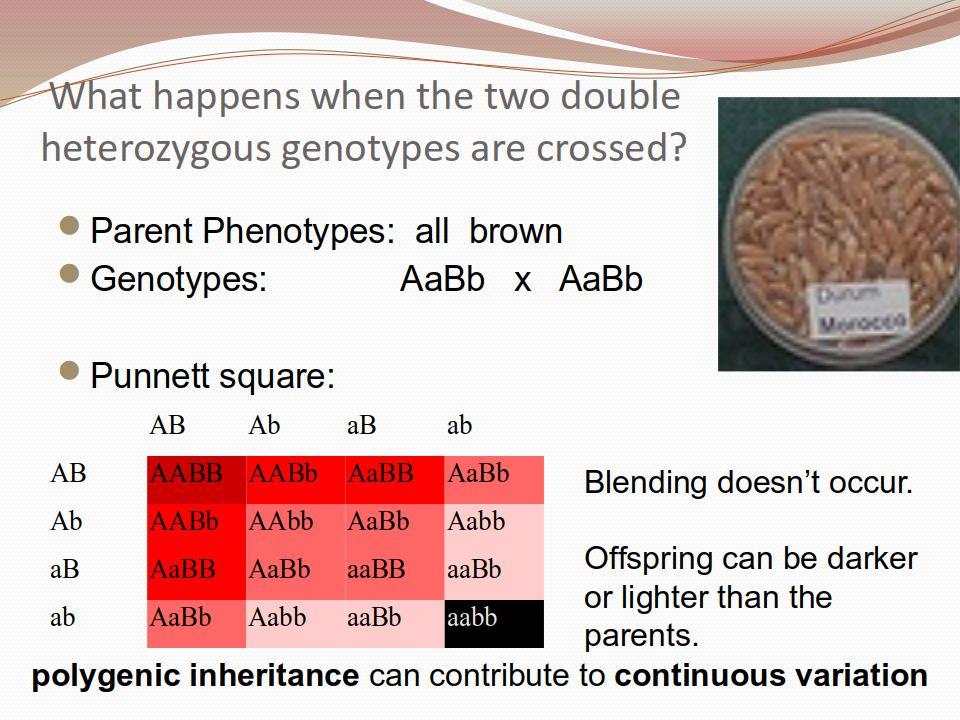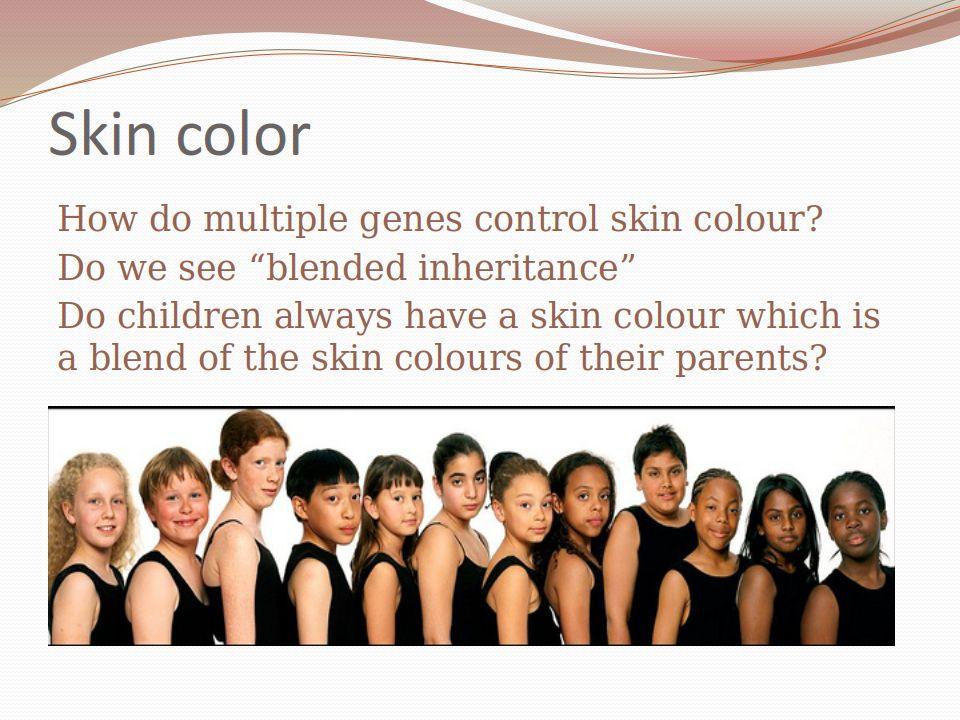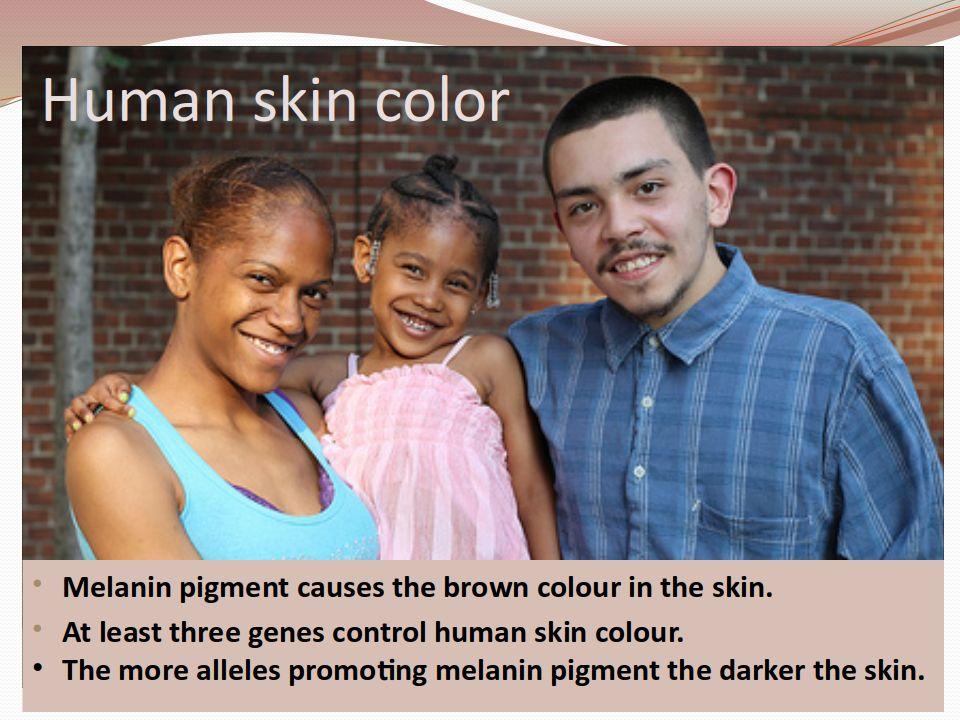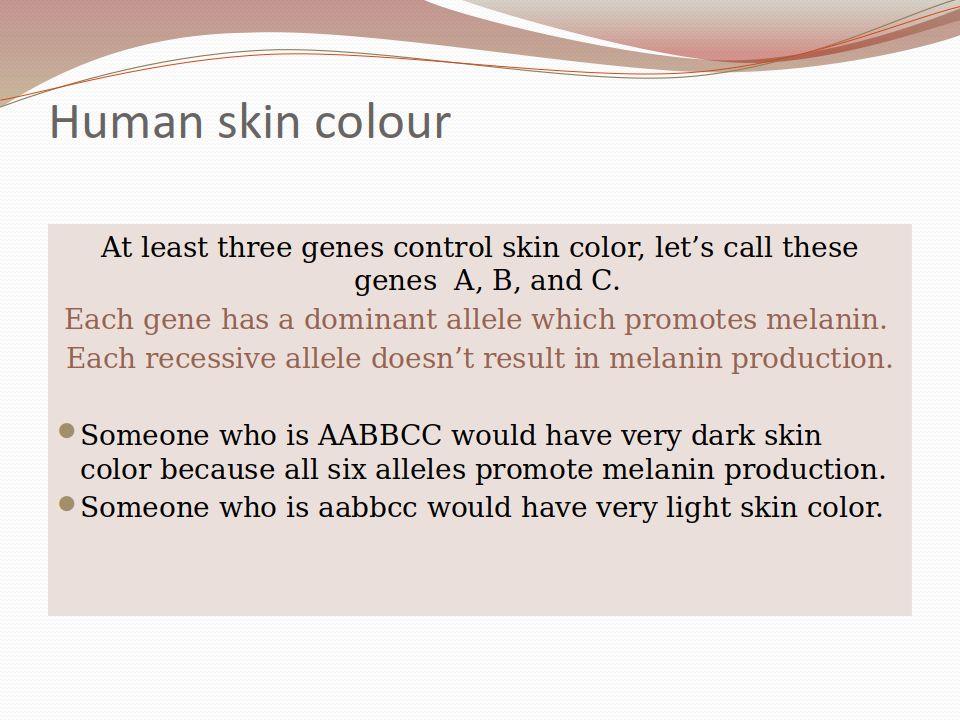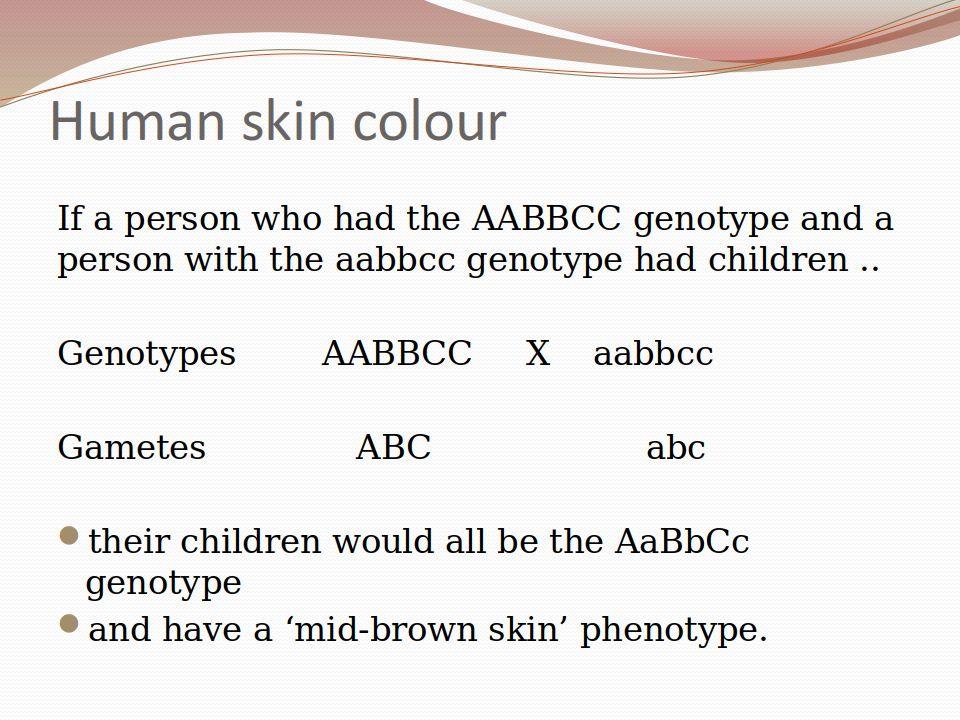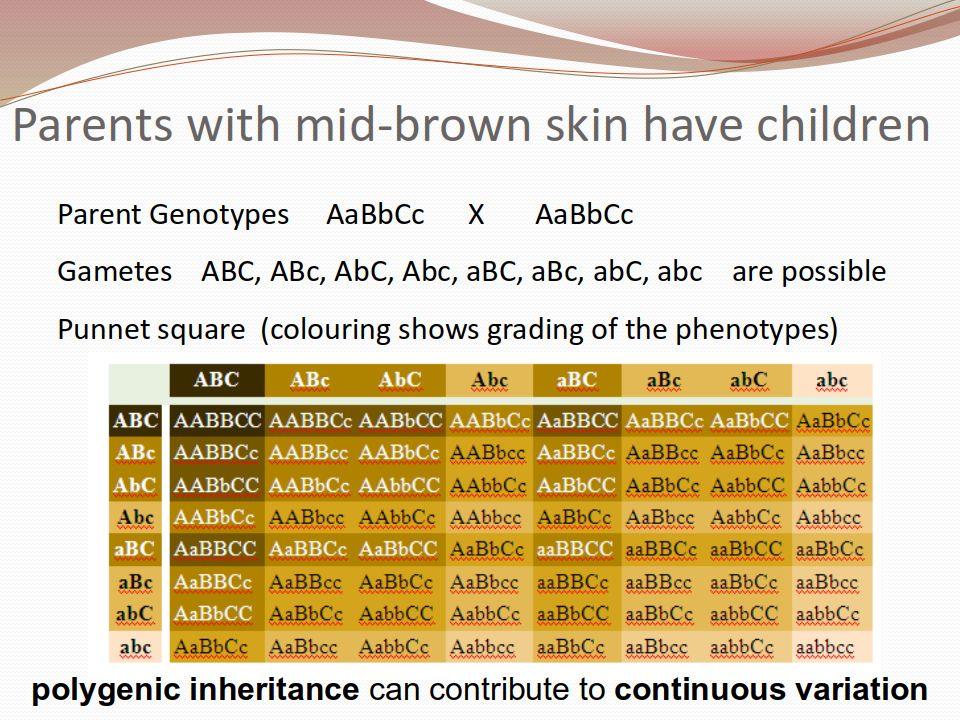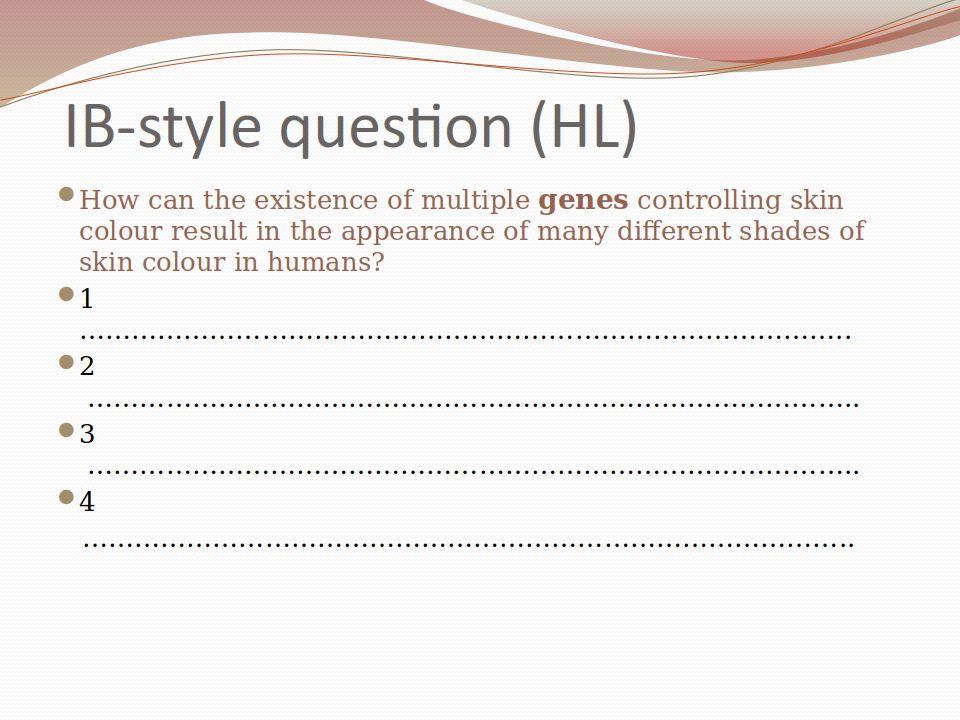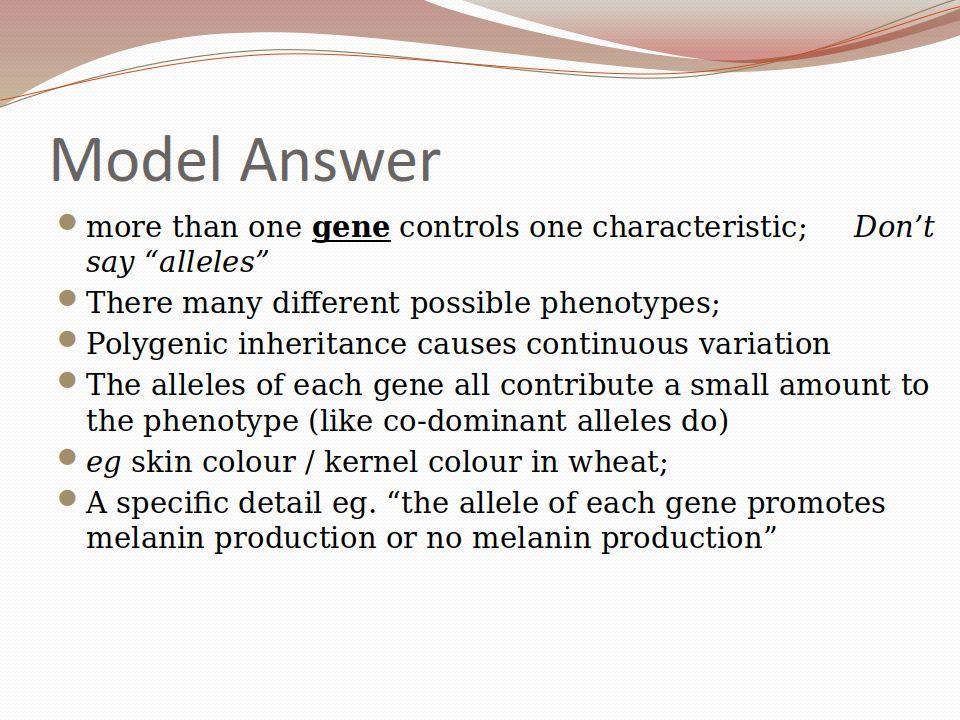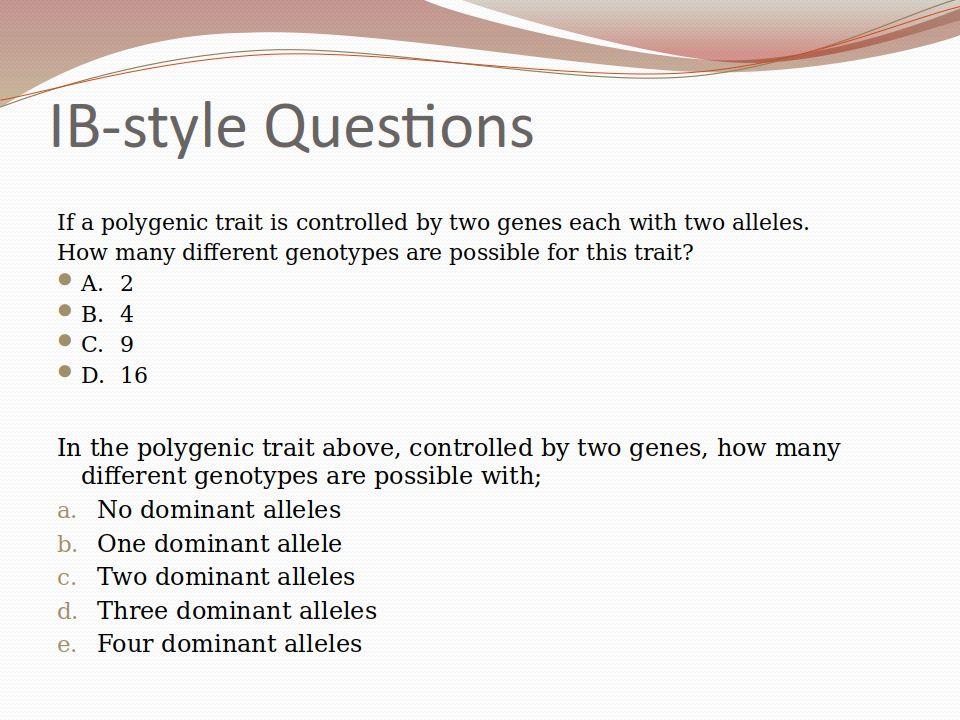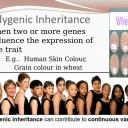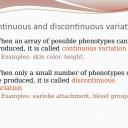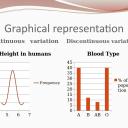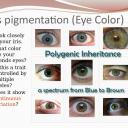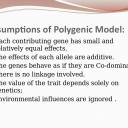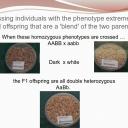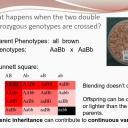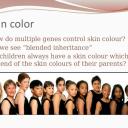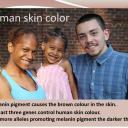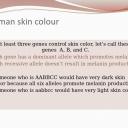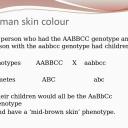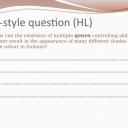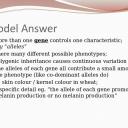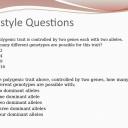Polygenic Inheritance.
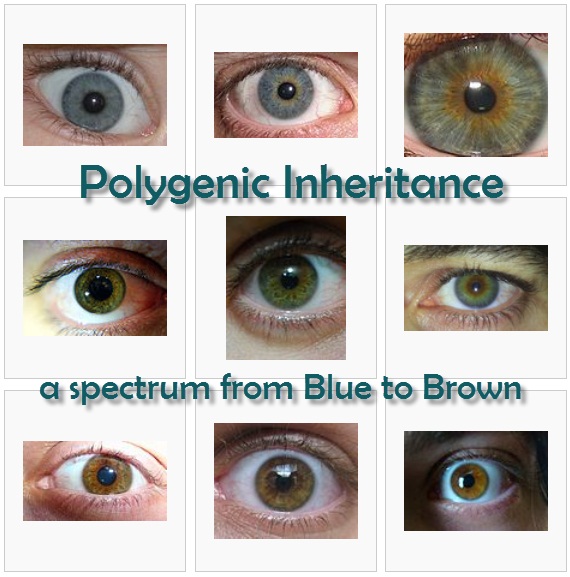 How is skin colour and eye colour really inherited?
How is skin colour and eye colour really inherited?
Using a powerpoint introduction students learn about another example of inheritance which Mendel didn't attempt to explain. Polygenic inheritance is probably the most common type of inheritance but even in its simplest form it appears rather complex. There are some simple examples to understand when students complete the structured notes worksheet and some questions to test this understanding.Word doc
Lesson Description
Guiding Questions
One major problem in genetics during the early 20th century involved the following question.
“If Mendel's ideas were correct then how can we explain the inheritance of traits where the offspring of a cross tended to be intermediate in appearance between the two parents?”
Activity 1 Introductory presentation
The following Polygenic Inheritance Presentation slides explain how the theory of polygenic inheritance can explain quite closely the inheritance of a large number of traits which show continuous variation.
Activity 2: Structured note taking and questions
Complete the ![]() Student worksheet on polygenic inheritance below.
Student worksheet on polygenic inheritance below.
Activity 3: Human eye colour
Human iris colour is considered to be a polygenic trait like skin colour. Research has identified several candidate genes for the control of iris pigmentation. It is not known exactly how our genes control eye colour and human iris phenotypes range from light blue to the dark brown.
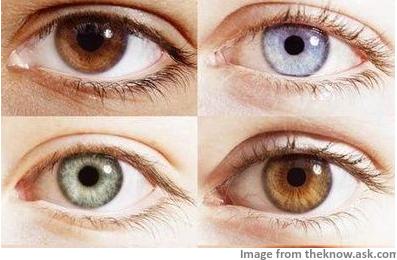
Some simplified examples used in high school supposes that eye colour is controlled by a single gene with a blue and a brown allele. Nothing could be further from the truth and perhaps this over-simplification in high school Biology classes is driving geneticists today to research the genetics of human eye colour with such zeal.
To learn a little more about how geneticists identify genes and their function complete the ![]() Student worksheet on eye colour below.
Student worksheet on eye colour below.
Teachers' notes
This is a simple short activity, the introductory slides introduce the ideas of how multiple genes controlling a single phenotype can bring about an array of possible phenotypes which will look like continuous variation.
This is especially true when the effect of the environment is considered, in skin colour for example.
The worksheet in Activity 2 is a way of engaging students with the material from the slides and could be used as notes after the lesson.
There are some interesting links about new research into the genetics of skin colour:
- A clear explanation of genetics of skin colour using playing cards as alleles from Tech interactive at Stanford Uni.
Activity 3 shows a past paper style question covering some modern analysis of single gene polymorphisms and their association with iris colour. While this introduces some quite complex ideas from an pieces of research, the questions are data based analysis and the connection of data analysis to the student's understanding of polygenic inheritance or the reliability of data.
The research which this activity is based upon in freely accessible on Cell.com

 IB Docs (2) Team
IB Docs (2) Team

